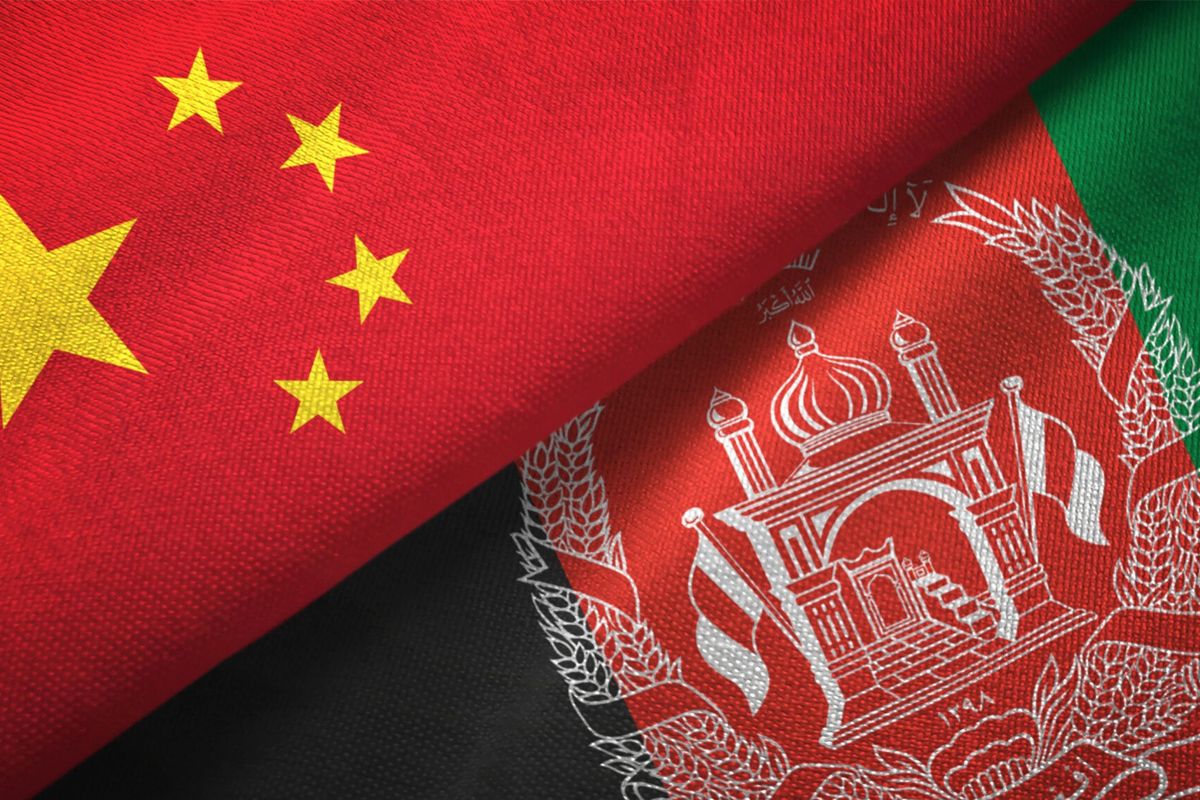U.S. Secretary of State Mike Pompeo is welcoming a ceasefire offer made to the Afghan Taliban over the weekend by the Afghan government. The offer comes as the Afghan Taliban stretches its lethal reach across Afghanistan with violent campaigns that have been building in intensity since earlier this year. Recent attacks include bloody battles in the streets of Ghazni, less than 100 kilometers from the capital, Kabul. U.S. and Afghan forces appear to have regained control of most parts of the city, but the symbolic show of strength that also included attacks against Afghan police and military bases, left as many as 500 people dead. While Pentagon chief Jim Mattis characterized the Ghazni attack as an attempt to gain press coverage, Taliban leader Hibatullah Akhundzada called for direct talks with the U.S.
Bottom Line: The security situation in Afghanistan is not likely to improve in the months ahead as Afghan Taliban forces continue to launch deadly assaults against Afghan National Security Forces (ANSF), which have proven unable to consistently fend off such attacks.
Background: The Afghan Taliban was formed in September 1994 in the predominantly Pashtun areas of southern Afghanistan under the leadership of Mullah Mohammad Omar, along with a group of Afghan clerics and religious students with ties to hardline mujahedeen rebels that had fought against the Soviet Union during its invasion of Afghanistan.
- Literally translated as “the students,” the Afghan Taliban gained popular support in southern Afghanistan by pledging to bring stability to a region fraught with conflict. The group imposed strict Sharia law in areas it controlled, carrying out amputations and executions. Television, Western music and dancing were prohibited, and women were banned from attending school.
- The Soviet Union’s retreat left a power vacuum in Afghanistan, and the Taliban’s forceful military approach enabled the group to assume control over the country in May 1996. Pakistan’s ISI supported the Taliban’s rise to power as part of its broader regional strategy to install a friendly government in Kabul and prevent India from extending its influence into Afghanistan.
- The Afghan Taliban has not been listed by the U.S. State Department as a Foreign Terrorist Organization, presumably to allow for the possibility of peace talks with the group.
- A key faction within the Afghan Taliban is the Haqqani network, which was founded by Jalaluddin Haqqani in the 1970s and emerged as one of the most important mujahedeen resistance units fighting against the Soviets during their invasion of Afghanistan in the 1980s. Throughout the Afghan-Soviet war, the Haqqani network established strong ties with Pakistan’s intelligence services, receiving U.S. weapons and Saudi funds that were funneled to mujahedeen groups through the ISI. Jalaluddin Haqqani formally joined the Taliban in 1995, serving as a military commander and cabinet member.
- The Afghan Taliban, along with many mujahedeen fighters who subsequently joined the movement, maintain longstanding ties to Pakistan dating back to the late 1970s and 1980s when the U.S. government turned to Pakistan’s Inter-Services Intelligence agency (ISI) as a conduit to funnel U.S. and Saudi weapons and money to mujahedeen fighting against the Soviet Union in Afghanistan. Following the Soviet Union’s withdrawal from Afghanistan in February 1989, many mujahedeen crossed over into Pakistan where they were educated in Islamic seminaries known as madrassas and later joined the Afghan Taliban.
- After the fall of the Taliban government in Afghanistan in October 2001, the Haqqani network retreated to Pakistan where it continued to direct and conduct terrorist activity inside Afghanistan. The U.S. State Department designated the Haqqani network as a Foreign Terrorist Organization in September 2012. Ties between the Haqqani network and the Afghan Taliban were strengthened in July 2015, when Jalaluddin’s son, Sirajuddin Haqqani, was appointed as a deputy leader of the Taliban. It is estimated that the Haqqani network can draw from some 10,000 fighters to carry out its operations.
- The Afghan Taliban, the Haqqani network and al-Qaeda leaders have all found safe haven inside Pakistan.
The idea of successful talks while violence rages on is likely a non-starter according to experts, primarily because of doubts over whether there will be true willingness on behalf of the Taliban to accept the current government and be flexible in their demands. Taliban leader Hibatullah Akhundzada is reportedly reaffirming his calls for U.S. withdrawal and criticisms of the current Afghan government as a “puppet organization” and a “corrupt regime”, creating an unlikely view of near-term security.
Gen. David Petraeus, Former Director, CIA

"The red lines for the Taliban haven’t changed and they are completely incompatible with the government in Kabul, and understandably so."
Kevin Hulbert, Former CIA Chief of Station
"Even by probably optimistic U.S. Military estimates, the central government in Afghanistan, heavily supported by the U.S., now controls barely half of Afghanistan. Things seem to be headed in the wrong direction."
Issue: Through persistent violence, the Afghan Taliban has crippled the Afghan government’s ability to exercise authority across the country, paving the way for terrorist organizations and other extremist groups to find safe haven in ungoverned spaces. Furthermore, the Afghan Taliban’s surge has directly impacted and strained U.S.-Pakistan relations, with Washington accusing Islamabad of harboring and supporting the Afghan Taliban and the Haqqani network.
- A January 2018 BBC report concluded that the Taliban threatens nearly 70 percent of Afghan territory. According to the study, the Taliban runs 14 districts – roughly four percent of the country – and approximately half of Afghanistan’s population lives in areas that are susceptible to some level of Taliban violence or influence. According to the most recent quarterly report issued by the U.S. Special Inspector General for Afghanistan Reconstruction (SIGAR), the Afghan government controls only 55.8 percent of the country. Both of these statistics represent alarming trend lines with respect to Taliban gains.
- News reports from January 2018 cite U.S. and Afghan officials who assess that the Taliban maintains a force of around 60,000 fighters – a significant increase from 2014 estimates, which placed the group’s numbers at around 20,000.
- The Afghan government and the Trump administration have blamed Pakistan for failing to root out Afghan Taliban, Haqqani and Hezb-e-Islami Gulbuddin leaders, who they believe find safe haven on the Pakistani side of the border. Pakistani officials deny the charges, instead accusing Kabul of failing to crack down on militants it says are sheltering in Afghanistan.
Gen. David Petraeus, Former Director, CIA

"If you can’t go after the Taliban headquarters in Quetta, if you can’t go after the Haqqani headquarters, with some exceptions, in North Waziristan, if you can’t go after the IMU headquarters, and on and on, that makes it an exceedingly difficult situation. And if you acknowledge that Al Qaeda and now IS very much want to return to certain parts of the country and establish the kinds of sanctuaries that Al Qaeda had under the Taliban, you’re in a tough situation."
Daniel Markey, Academic Director, Global Policy Program, Johns Hopkins SAIS
"The only sustainable solution to the Taliban insurgency would be a combination of strengthened Afghan security forces (both police and army), a real Afghan air force, an effective border force to stem the flow of fighters from Pakistan, and more effective/just governance throughout the country. Kabul is decades away from this and may never achieve it. Even with the Trump administration's more aggressive air campaign, which has limited the ability of Taliban fighters to launch mass attacks, the insurgents have shown that they can threaten, take, and briefly hold important cities and routes until Kabul manages to send reinforcements. While this does not mean the Taliban are about to conquer the country, it does reflect the broader reality of a strategic stalemate that has not been resolved by the Trump administration's policies."
Response: While the U.S. military has maintained a consistent troop presence in Afghanistan since 2001 and has diligently trained, advised, supplied and assisted the Afghan National Security Forces, policymakers in Washington have failed to articulate a clear strategic objective in Afghanistan throughout the nearly 17-year conflict and peace talks with the Afghan Taliban remain elusive. The Trump administration has faced the same uncertainty with its approach to Afghanistan, although it has pressed Pakistan to rescind its support for certain militant groups and bring the Afghan Taliban to the negotiating table.
- In August 2017, U.S. President Donald Trump revealed his strategy for Afghanistan, which included a shift from a time-based approach to a conditions-based approach for U.S. troop presence in Afghanistan. Trump also announced that transparency about troop numbers and military activities was off the table, stating that “America’s enemies must never know our plans or believe they can wait us out.”
- The U.S. has approximately 15,000 troops stationed in Afghanistan, while an additional 3,000 NATO forces from U.S.-allied nations were deployed in January 2018, bringing the total number of NATO forces in Afghanistan to around 16,000.
- As of August 2017, Afghan forces numbered an estimated 320,000 troops. The Afghans took primary responsibility for their security in January 2015, and the goal strength for the defense force is approximately 352,000 people, including roughly 195,000 members of the Afghan National Army and 157,000 in the Afghan National Police. Reaching these goals has proven challenging, however, as Afghan casualties rise due to increasingly common and deadly Taliban strikes across the country, and the Afghan Army faces more difficult recruiting prospects.
- The Trump administration is withholding more than $1 billion worth of security assistance from Pakistan, including $900 million in Coalition Support Funding, due to Pakistan’s failure to crack down on members of the Haqqani network and the Afghan Taliban inside its territory. The Trump administration has provided Pakistan with a hit list of nearly a dozen top militants to detain as a way to demonstrate its willingness to cooperate and win back security funding. Aid to Pakistan has been suspended before. In July 2011, the Obama administration blocked $800 million in aid to Pakistan, after the U.S. found Osama bin Laden had been hiding in the country.
- Peace talks between the Afghan government and the Taliban have thus far failed to gain traction since the July 2017 launch of the Kabul Process for Peace & Security Cooperation, which aims to bring a political settlement to the ongoing conflict in Afghanistan. In February 2018, Afghan President Ashraf Ghani called on the Taliban to join the peace effort, offering to grant the group political party status with an office in Kabul, help remove Taliban leaders from terrorist blacklists and negotiate without preconditions. However, the Taliban has insisted on direct negotiations with the United States, while Washington has maintained that any talks must first occur between the Taliban and the Afghan government. Washington has also asked Pakistan to use its influence to bring the Afghan Taliban to the table.
Looking Ahead: The long war is likely to go decades longer. The Afghan Taliban has demonstrated its ability to threaten, take and briefly hold important territory. As the Afghan government and security forces fail to stop Taliban advances, the most likely outcome is a continuing need for a U.S. and international presence, and without a clear strategy to curb the Taliban’s violent advances, the U.S. and NATO are likely to continue to provide just enough firepower to keep the Kabul government in control of the populated areas of the country, without bringing significant improvement to their position.
Gen. David Petraeus, Former Director, CIA

"There is no magic hill out there that you can take, plant the flag, declare success, and come home to a victory parade. I think we have to stay at it; of course, that’s particularly difficult if your host nation partners have a variety of challenges and limitations, as they clearly do in Afghanistan, but given how we have been able to reduce the cost in blood and treasure, we can do that."
Daniel Markey, Academic Director, Global Policy Program, Johns Hopkins SAIS
"This battlefield reality should force Kabul and Washington to appreciate that no military victory is in sight. Similarly, Taliban advances do not equal victory, and their leaders must also appreciate the limits to what they can achieve. This stalemate should continue to prop the door open for a range of diplomatic negotiations, preliminary moves on the way to some more serious peace process. Nothing good will happen quickly, but the slow-motion process of fighting, talking, and perhaps an occasional cease-fire is better than any other realistic option."
Kevin Hulbert, Former CIA Chief of Station
"The triple-headed conundrum of Taliban strength, Afghan Army weakness, and a flawed US strategy will not end well if we continue on our current course. The Ghazni attack is not only an important development we should take lessons from, it is also sobering."















